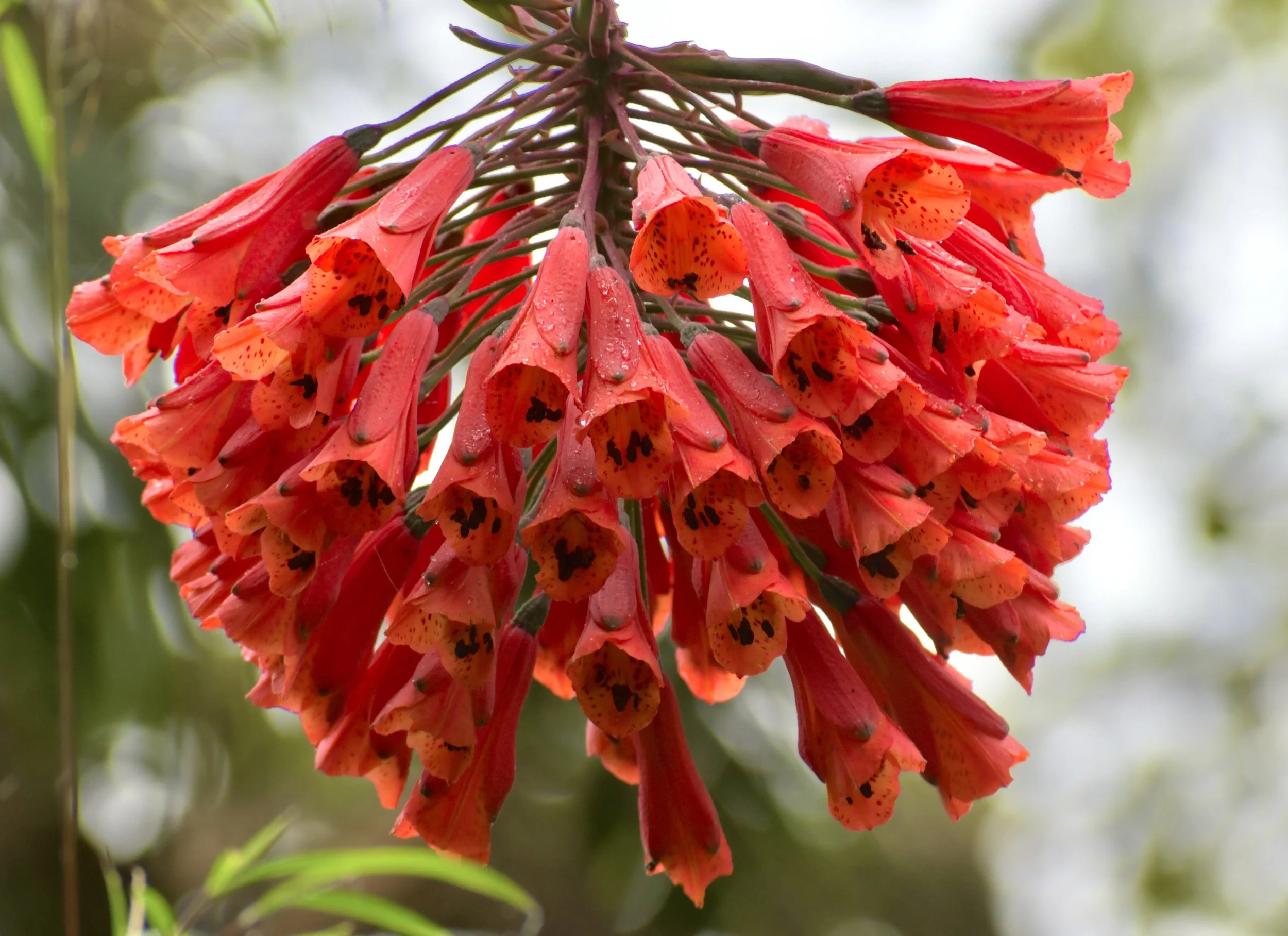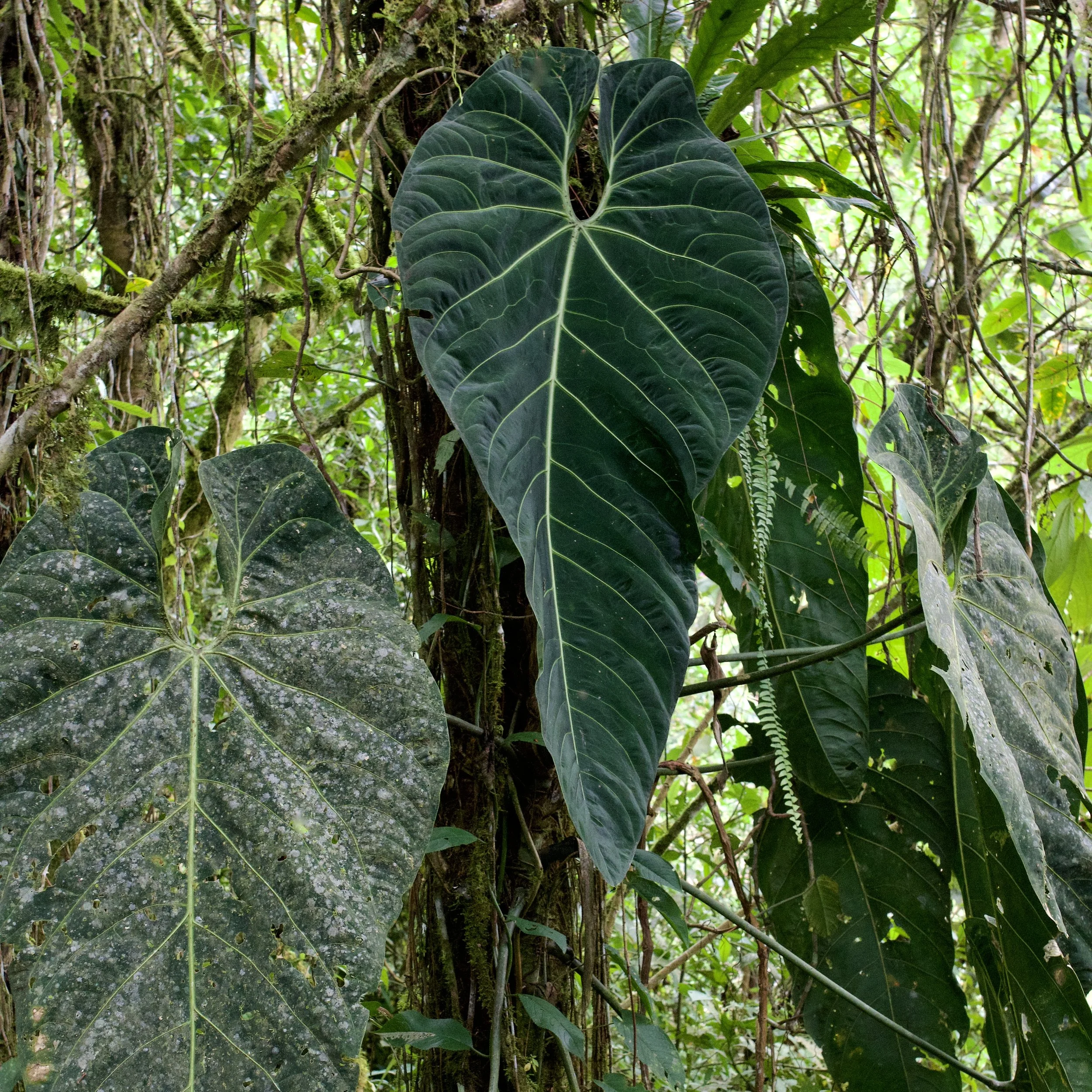The Native Lingo
Ornamental Plant Taxonomy & Breeding – An Illustrated Guide to the Terminology
by Jay Vannini
The simple umbel inflorescence on an exceptional orange-flowered form of Bomarea multiflora growing in cloud forest in Cundinamarca Department, Colombia. Image: ©J. Vannini
Given interest expressed in the lexicon of plant breeders along with taxonomic terminology and their proper usage by many readers of this website, I have assembled a list of the more relevant English language terms and their summarized definitions below.
Many of these words will be familiar to advanced gardeners and plant collectors; others less so. Rather than ordering this reference alphabetically as in a typical glossary, I have opted to group by association with taxonomic terms shown first, followed by cultivated plant naming, plant breeding, plant reproductive structures, and mutations.
This list will be of most use to those who are unfamiliar with the vagaries and minutiae of modern horticultural and taxonomic vernacular. It is illustrated with examples of plants and floral details that should provide additional clarity for many definitions.
Some plant taxa simply refuse to be neatly pigeon-holed and therein lies much of the ongoing controversy about their proper naming.
Before we start down a rather meandering path littered with systematics, plant breeding and plant registry vocabulary, let us pause and warily contemplate the 800-pound gorilla in the room.
So, just what is a species?
This is a basic and deceptively simple question that–even in the age of molecular phylogenetics and a surplus of well-educated biologists looking for something interesting to do with grant money–defies a simple answer.
A quick internet search or referring to a standard encyclopedia or dictionary normally provides more-or-less straightforward definitions of this term. Here is one taken almost at random, quoted from Merriam-Webster’s online dictionary: “noun. plural species: a category of biological classification immediately below genus or subgenus, comprising related organisms or populations potentially capable of interbreeding and being designated by a binomial that connects the name of the genus by a Latin or latinized uncapitalized noun or adjective agreeing with the genus name.”
Besides the minor language issue, there are two errors worth mentioning in this definition:
In botany there are additional taxonomic ranks between a subgenus and a species, i.e., “section”, “subsection” and “series”. These ranks are mostly associated with so-called megagenera that have extremely large numbers of taxa, especially begonias (Begoniaceae), milkvetches (Astragalus spp. - Fabaceae), splurges (Euphorbia spp. - Euphorbiaceae), a couple aroid (Araceae), and several orchid (Orchidaceae) genera.
Both in nature and in cultivation/captivity long-recognized, uncontroversial species are known to interbreed freely; indeed, many animal and plant species readily hybridize across genera, sometimes even to distantly-related ones. Hybridization in nature is now widely accepted as an important evolutionary path to speciation.
Along similar lines there is 20th century evolutionary biologist Ernst Mayr’s 1942 definition of species that will usually dominate results in any online search of the term:
“Species are groups of interbreeding natural populations that are reproductively isolated from other such groups.”
In defense of Mayr, evolutionary theory and systematics have come a long way over the past 80 years. Still, it is an understatement to say that opinions vary widely as to what is the “right” current definition of a species, or if a universally-accepted definition of one will ever exist.
My concept of a species is that it is a naturally-occurring organism that in totality across its geographic range exhibits a unique combination of morphological (not cosmetic) characters that readily sets it apart from related species, and that it transmits these key traits to its offspring in a uniform manner when bred with like organisms. These organisms may or may not interbreed freely in nature with related members of their genus or other related genera, both where they occur in syntopy (side-by-side if you will) or at the edges of their distributions, sometimes resulting in clinal variants or subspecific intergrades. These offspring, i.e., naturally-occurring hybrids that may be part of diverse, genetically-mixed populations, are usually readily identifiable as such by specialists when observed in situ.
Species names should properly be italicized or underlined when appearing in formal text settings and abbreviated as: sp. = species (singular, no italics) and spp. = species (plural, no italics). Depending on the presentation, the describing author/s surname/s may follow, with some lengthy ones abbreviated.
As an example, the scientific name of the Mesoamerican Devil’s Hand Tree may be written either, Chiranthodendron pentadactylon Larreat. or Chiranthodendron pentadactylon Larreat. Note that the generic name begins with an upper case letter, but the specific name is all in lower case letters. The author’s surname – Larreategui - has been abbreviated in this case. The abbreviation of this species’ scientific name is C. pentadactylon.
Its binomial is a composite of several Classical Greek words that very accurately describe its key characters. Thus, Chéri+ánthos+déndron (hand+flower+tree) and pénte+dáctylo (five+finger) freely translates as the Five-fingered Hand Flower Tree.
A south Asian and Malesian spike moss Selaginella sp. in cultivation showing terminal strobili. Image: ©J. Vannini
To continue reading the rest of this and other Premium Content articles, please subscribe to Esotérica Exclusiva.
Access to deeper dives and behind the scenes looks into advanced tropical horticultural practices as well as observations on fieldwork, plant collection management, and Neotropical wildlife.
Follow us on:






